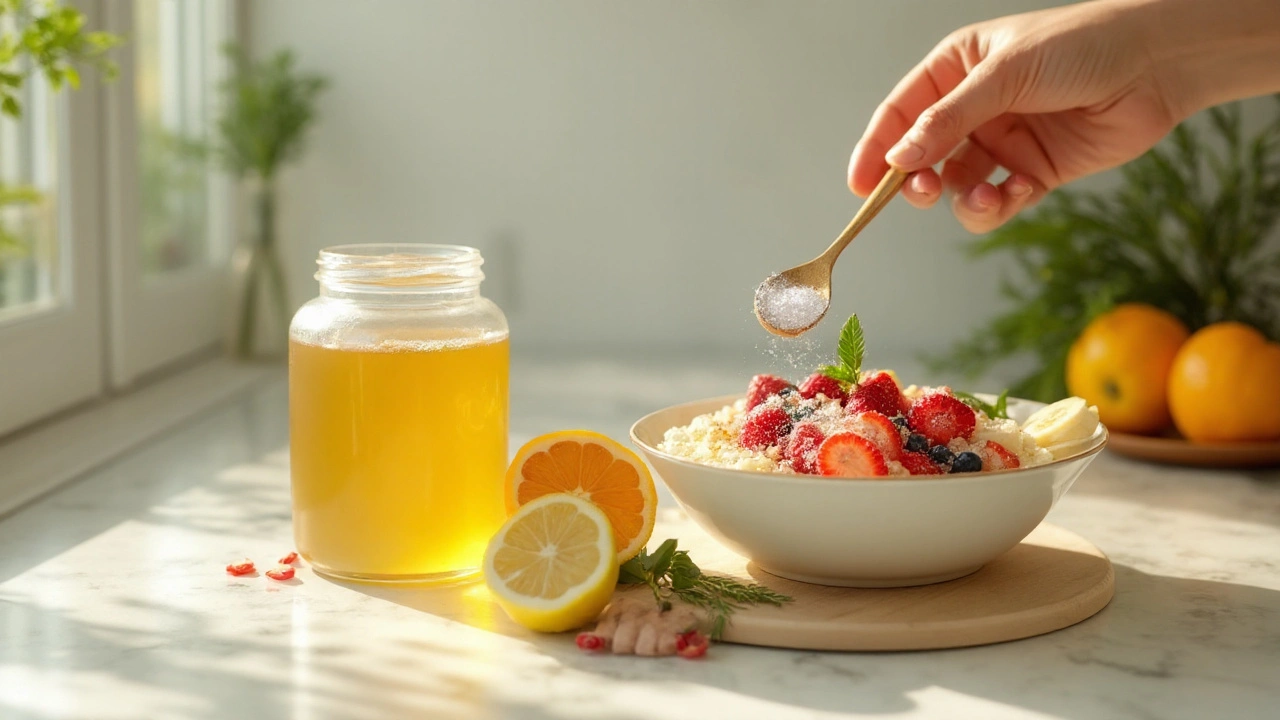If you’ve heard the term “antimicrobial fatty acid” and wondered what it really means, you’re not alone. These are simple fats that can stop bacteria, fungi, and even some viruses from growing. Unlike prescription antibiotics, many of them are found in foods or skin‑care products, so they’re easy to add to daily routines.
In this article we’ll break down the science in plain words, show where you can find these fats, and give practical safety advice. By the end you’ll know if adding an antimicrobial fatty acid to your life makes sense for you.
All fatty acids have a carbon chain and a “head” that likes water. The ones that act as antimicrobials usually have a short to medium chain (6‑12 carbons) and a free carboxyl group. This shape lets them insert themselves into the outer membrane of microbes and disrupt it.
When the membrane breaks, the microbe can’t hold onto its nutrients and it dies. The process is fast and doesn’t rely on the complex pathways that typical antibiotics target, so resistance develops slower.
Common examples include lauric acid (found in coconut oil), capric acid (found in dairy), and caprylic acid (also in coconut). These three are often called medium‑chain triglycerides (MCTs) when they’re part of oil, but the free acids are the active antimicrobial part.
Food is the easiest source. Adding a spoonful of coconut oil to coffee or smoothies gives you lauric acid. Dairy products like cheese and butter contain capric and caprylic acids in small amounts. Some specialty supplement capsules list “MCT oil” as a primary ingredient.
Skin‑care is another big market. Many natural soaps, creams, and balms list “caprylic/capric triglyceride” as a skin‑friendly carrier that also helps keep acne‑causing bacteria in check. You’ll see it on products marketed for oily skin or minor cuts.
In the medical world, researchers are testing these fatty acids in wound dressings and even inhalable powders for respiratory infections. The goal is to use a safe, naturally occurring molecule instead of a synthetic drug.
Start small. If you’re adding coconut oil to food, a teaspoon a day is enough to get a dose of lauric acid without adding too many calories. For skin, a thin layer of a caprylic/capric‑based cream works best on clean, dry skin.
Watch for irritation. Some people with sensitive skin may feel a mild sting when the fatty acid contacts broken skin. If that happens, wash it off and try a lower concentration or a different product.
Don’t rely on it alone for serious infections. While these fats can help keep minor bugs at bay, they aren’t a replacement for prescription antibiotics when you have a real infection.
Store oils in a cool, dark place to prevent oxidation. Oxidized fats can lose their antimicrobial power and may even cause skin irritation.
Antimicrobial fatty acids are simple, natural molecules that can fight germs in food, skin, and some medical settings. They work by breaking the microbe’s outer shell, which makes resistance harder. Adding a modest amount of coconut oil to your diet or using a caprylic‑based skin product can give you a gentle boost of protection, as long as you stay aware of possible irritation and don’t skip professional treatment when needed.
Give them a try, pay attention to how your body reacts, and you’ll see whether these everyday fats fit into your health routine.

Discover why lauric acid is touted as a miracle supplement, how it works, its health benefits, safe dosages, and how it compares to other MCTs in a clear, practical guide.
Read More© 2025. All rights reserved.